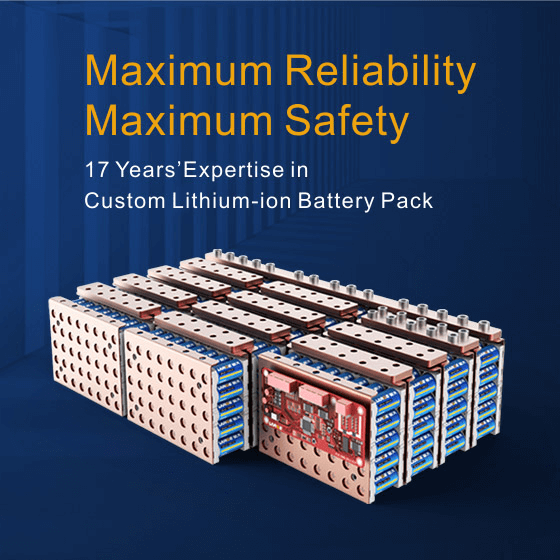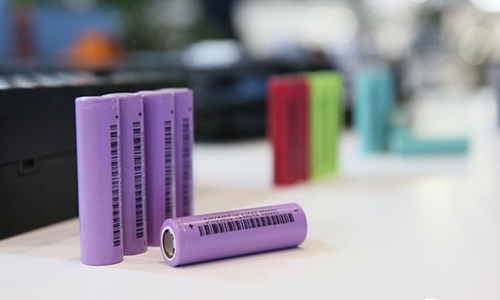18650 Battery Amp Output-Characteristics Analysis
Sep 27, 2019 Pageview:3948
What is 18650 battery?
18650 battery, also known as “18650 cell” is a lithium ion battery. A good battery can’t only be light weight with great capacity, it also needs to be reusable, hence, rechargeable. 18650 Cell is also rechargeable. Its voltage is between 1800 mAh and 3500 mAh. mAh refers to mili-Amp-hours. They have two types: one is called protected and the other is called unprotected. The 18650 battery is more recommendable. It takes 4 hours to charge a 18650 battery. This can, however, vary depending on the voltage and battery type. It is 1170 cubic mm. Proper disposal of 18650 batteries is highly advised and emphasized on.
Protected vs. Unprotected 18650 batteries
18650 protected batteries have an electronic circuit. The circuit is ingrained in the cell packaging that provides it insulation and prevents the battery from over charging or over-heating. It also prevents it from over discharging and over current. It is safer than the unprotected battery as it is less likely to cause the above mentioned factors. 18650 unprotected batteries are less expensive but should only be used when charge/ discharge is monitored and managed manually.
How many amps does a 18650 battery have?
An 18650 lithium ion battery can produce up to 3.7 Volts. It stores about 2Ah to 3 Ah, maximum. Each?18650?cell is 2?amp?hours or 10 to 13 watt hours. They are usually rated 3.6, 3.7 or 3.65 volts. It’s known as the average voltage during one complete discharge. The voltage rating for most 18650s is between 2.5 and 4. Volts.
How many times can you recharge an 18650 or other battery?
Recharging cycles are, unfortunately, limited. Gradually your battery starts to lose its efficiency due to factors such as over-heating and will start decreasing charging from 100 percent. It happens because of oxidation and electro chemical degradation. This implies to any rechargeable battery, whether it’s from your phone, laptop or car.
What is the highest amp 18650 battery?
Samsung 20S 30A is known to have the highest rating and amp production so far. Some other examples are:
Samsung 30Q 3000mah 15A CDR cell can be pushed to 20a?if?cell temperature is monitored & kept below?75c / 167f.
Sony vtc 6 is a 3000mah 15 a CDR cell that can be pushed to 20a?if?cell temperature?is monitored & kept below?80c / 176f.
LGHG2 is a 3000mah 20a CDR cell.
The stronger a cell is pushed the quicker they degrade.
How to make battery last longer?
A battery’s internal resistance tends to become greater with its lifetime and by the time the battery needs to be replaced, and its internal resistance is greatest. Internal resistance is caused by dendrites. Performance of a battery is hindered by dendrites which are productions that appear to be tiny stalagmites made of lithium deposits. Over time, as a battery is being regularly used, lithium ions start gathering on the anode. After some time, the lithium flow becomes non-uniform, leading to the formation of dendrites, which can cause the battery to short circuit. Many research centers have to prevent the formation of these dendrites but have been unsuccessful until Wei realized that introducing a layer of porous material into the circuit could prevent the formation and collection of dendrites on the anode. Further investigation lead to the discovery that porous material suppressed the initiation and growth of these dendrites. With a layer of porous material, the dendrites that did come into existence were 75 percent shorter than those that were formed in systems without porous membranes.
What do you need to pay attention to during battery output?
Battery output depends on how much power or energy is stored in the battery. Battery follows Peukrit’s Law. Peukrit’s Law states that the more current you try to draw from a battery, the less mAh you will be able to get out of it. Battery output is calculated in Watt-hours, which is calculated by multiplying current provided by the battery to the voltage provided by the battery multiplied by a specific time the cycle was run for. Since voltage is a constant in batteries, only Amp-hour measurement is printed along the sides. To get to W-h, we just have to multiply A-h with nominal voltage. 1 A-h means we can draw 1 Amp of current for an hour. The ideal way to measure power capacity is by measuring it in Coulombs. A new battery should deliver 100 percent of the rated Ah capacity. Lead acid starts at about 85 percent and the capacity will increase before it decreases gradually. To reduce stress on battery and make it more efficient, charge it for 3 to 4 hours rather than fast charge of one hour. Don’t fully drain the battery before recharging it, instead charge it again and again. As runtime shortens, battery related problems arise more often and the battery becomes problematic rather than helpful. It is recommended to have your battery replaced after its efficiency has dropped to 80 percent, although it may vary depending on your battery type and what you are using it for. The output of a battery also depends on the setting of the charger. If maximum charge is reached at 3.7 V, then anything less or more than that can produce undesired results, which in this case is less production of charge.
Safety Precautions
· Don’t overcharge your battery (don’t exceed upper limit)
· Don’t over-discharge your battery (don’t go beyond lower limit)
· (Doing so may lead to smoke, fire or even an explosion)
· Current should be limited to a specified amount
· Discharged Current should be limited to a specified amount
· Charge and Discharge temperature limit should be specified (should not exceed upper and lower limit)
· Continuously monitor cell voltages and keep a balance
· Keep in mind the capacity and the number of cycles the battery can run
· Physical protection of the pack should be kept in mind
· Precautions for short circuit protection
Individual cell integration issues need to be brought into account
- Prev Article: Lithium-Ion Battery Charging Characteristics
- Next Article: LIPO Battery Charge Calculator
Leave Message
Hottest Categories
-
Hottest Industry News
-
Latest Industry News











